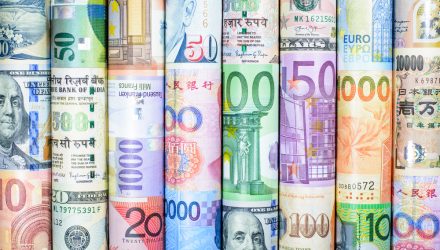One of the primary risks investors face when allocating to international equities is currency risk. Put simply, some countries’ stocks benefit when their currencies are low relative to the U.S. dollar. Others do not enjoy that perk.
Some of that risk can be mitigated with geographically diverse exchange traded funds, including the Calvert International Responsible Index ETF (CVIE). Still, it is a time of elevated interest rates in the U.S. The Federal Reserve could continue its tightening campaign. Therefore, currency risk takes on added importance when allocating to international equities.
Point is some countries, particularly those with export-driven economies, benefit from a strong dollar because greenback-denominated sales are converted back into larger amounts of local currencies. However, a strong dollar can pinch stocks in other ex-US markets.
Examining Impact of Currency Fluctuations
The foreign exchange market is one of the largest and most liquid of all financial markets. It’s basically open all day close to six days a week. Investors don’t need to get bogged down in that minutia. They should understand how currency price action can affect their international investments.
“Foreign exchange-rate fluctuations affect the performance of foreign stocks. U.S.-based investors who buy shares of foreign stocks typically do so in the stock’s local currency,” noted Morningstar analyst Mo’ath Almahasneh. “Those returns are then translated back into U.S. dollars based on the relative exchange rate. The movement of exchange rates can either benefit or hurt U.S. investors who hold foreign stocks. If the value of the local currency appreciates versus the U.S. dollar, U.S. investors will see higher returns and vice versa.”
For its part, CVIE is not a currency hedged ETF, meaning that it could be vulnerable to prolonged periods of dollar strength. However, significant exposure to export-driven economies such as Japan, Germany, and Taiwan offsets some of that risk. Those three countries combine for about 28% of the fund’s geographic exposure.
To its credit, CVIE has outperformed the MSCI EAFE Index since coming to market in January. Additionally, international equity ETFs that are not currency hedged typically offer investors the advantage of lower fees, a fact confirmed by CVIE’s modest annual expense ratio of 0.18%.
“Currency hedging is not free. Currency-hedged funds incur higher costs and charge investors higher fees (in most cases) than unhedged alternatives,” concludes Morningstar’s Almahasneh.
For more news, information, and analysis, visit the Responsible Investing Channel

